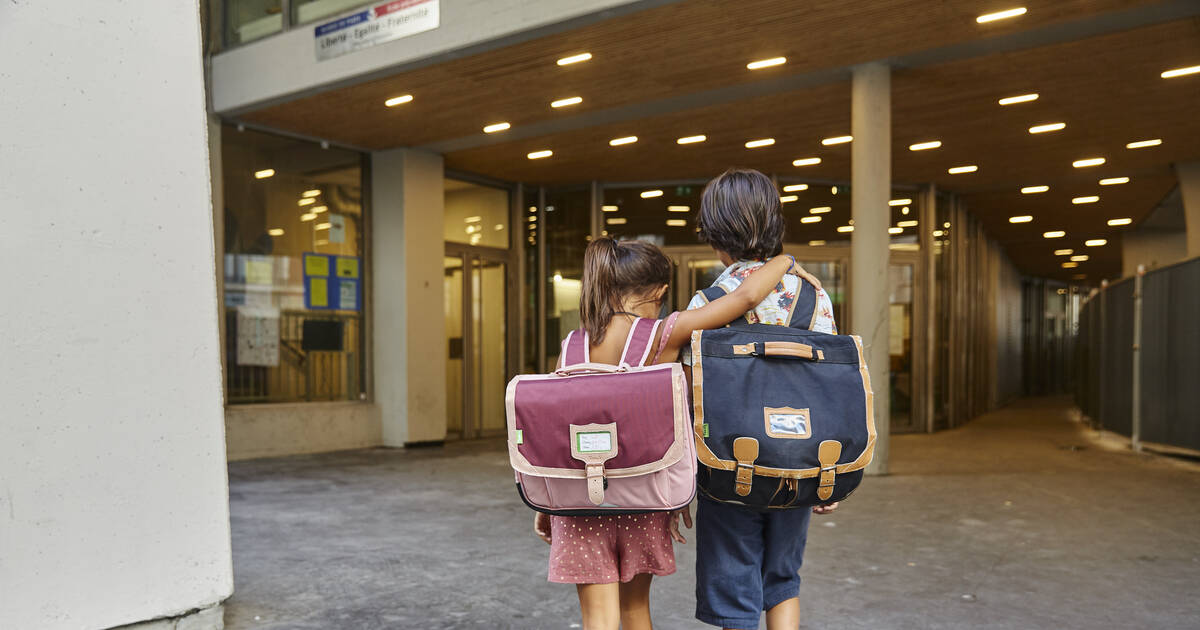The 500 kindergarten and primary school students at the Parisian school Saint-Merri (IVe) can breathe a (partly) cleaner air. According to a study by the City of Paris, revealed by Le Parisien on Monday, December 18, the concentration of nitrogen dioxide (NO2) – a polluting gas released during combustion processes – has indeed decreased by 25% between 2021 and 2023 near this elementary school, on Saint-Merri street. The concentration of NO2 has also decreased by 23% in the classrooms compared to previous readings from 2021, according to measurements taken by the public health department.
This improvement in air quality around the school was made possible by the implementation of the “School Streets” program, an urban development initiative launched by the city of Paris since 2020. This program involves pedestrianizing the streets and even greening the roads where schools are located. “The goal of this plan is to stop the traffic of cars in front of schools, therefore reducing pollution. At the same time, we take the opportunity to plant trees, remove asphalt, and cool down the streets. The idea is also to protect the children and ensure their safety,” explains Anne-Claire Boux, deputy to the mayor of Paris in charge of all public health issues.
In the Rue du Renard adjacent to the school, car traffic has been reduced to one lane since the beginning of 2023 to accommodate two-way traffic for cyclists. Additionally, the perpendicular street of Saint-Merri has been pedestrianized. “Our main objective is to fight against pollution, especially since children, due to their height, are at the level of exhaust pipes and are therefore the most affected by the amount of nitrogen dioxide and the resulting poor air quality,” urges the Green Party councilor.
Nitrogen dioxide, an irritating gas for the bronchi
NO2 is one of the main polluting gases present in the atmosphere. “In Paris, thermal vehicles are responsible for 54% of nitrogen dioxide emissions. The second source of emissions is heating – gas, oil, and wood – accounting for just under 40%,” details Antoine Trouche, an engineer in charge of scientific mediation at AirParif, an air quality monitoring association. Reducing traffic naturally contributes to the decrease of the pollutant in the atmosphere.
The engineer is pleased with the encouraging results of this study, as “nitrogen dioxide is a very irritating gas that attacks the lungs and our respiratory system.” According to Antoine Trouche, a high concentration of NO2 “increases the risk of asthma attacks, their intensity, chronic respiratory diseases, or even the risk of cancer. And since children’s bodies are still developing, they are even more vulnerable to the emissions of this gas.”
Beyond its immediate consequences, nitrogen dioxide, known to irritate the respiratory system, can also trigger a chain reaction. By combining with ammonia, a “gas emitted at over 70% by agricultural spraying in the Ile-de-France region,” it “leads to the formation of ultrafine particles that penetrate very deeply into the human body,” adds the AirParif engineer. Thus, reducing NO2 concentrations and curbing its ability to form other, even more dangerous pollutants is crucial.
“700 premature deaths per year in Paris could be avoided”
For the city hall, the fight against this atmospheric pollutant starts right in the schoolyard. The results of the survey demonstrate that “it works, that the program is part of the solutions that work to fight against air pollution,” says Anne-Claire Boux. She affirms that further studies will be conducted in the coming months to more broadly assess the benefits of the plan.
In the vicinity of the Saint-Merri school, the average annual concentration of nitrogen dioxide now approaches 24 micrograms per cubic meter, according to Le Parisien, while European regulations impose a maximum threshold of 40 micrograms. However, “700 premature deaths per year could be avoided in Paris if we lowered the levels of nitrogen dioxide in the air, in line with the recommendations of the WHO, which is 10 micrograms per cubic meter,” emphasizes Antoine Trouche.
But the program cannot suffice on its own. While praising this initiative, which will be expanded to 100 new streets by 2026, the AirParif engineer also notes, “Children are exposed to this pollutant in the schoolyard, but also at home. To improve air quality as a whole, emissions of NO2 would need to be reduced across the entire territory.”



